The first railway line was laid in the in the areas that now comprise Pakistan in the year 1858 in Karachi. Following is the story of this historical event as well as the construction of first railway section of Pakistan which was opened between Karachi City and Kotri in 1861.
Following photo is kind of jumping the gun in our story but it is the earliest photo of railways that I could research for Karachi-Kotri section. The photo is circa 1900 and shows the 0530 a.m. passenger train reaching Frere Road Station (now called Karachi Cantt) from Kotri.

The origin of Railways in Pakistan is quite unusual. The railway here was not built for commercial passenger service but more for the reason of cutting transport time for cargo bound for East. The first line from Karachi to Kotri was constructed primarily to reduce the journey time on the final stage of long haul from Britain to Delhi and Calcutta. Many of the later lines were built for Military purposes.
The Early Planning:
The Railway planning in the areas that comprise Pakistan got an official status when Lord Dalhousie, Governer General of India, gave his approval for laying a 108 miles (173 km) long railway line between Karachi and Kotri in December, 1853 .
Scinde Railway (SR) Company:
The next significant event in the history of Karachi-Kotri section occured in 1855 when Scinde Railway Company was formed in London. In January 1856, a contract was signed between East India Company and Scinde Railway Company to build Karachi-Kotri Railway Line. In 1857, Scinde Railway Company’s scope was increased to laying a railway track between Karachi and Kotri and also between Multan and Amritsar via Lahore.
The Ground Breaking of the First Railway Project:
Sir Bartle Frere, who was the then Commissioner of Scinde (Sindh) did the ground breaking of the project on April 29, 1858. The ceremony included him pushing a wheel-barrow full of construction material at the site of a railway embankment in Karachi.
I can say for sure that first Railway Track in Pakistan was thus laid somewhere between April, 1858 and December, 1859. This is a 16 month long time period but I am unable to research the exact date or a time window any shorter than this.
In 1859, two small stretches of Railway Line were opened in Karachi. One of this track section still exists while the other one has been uprooted.
The First Operational Railway Track:
The First section, which exists to date, ran from the then Karachi port of Kimari to Railway Workshops which were located near the present day ‘kala pul’ just north of Karachi Cantt Station.
See the map of Karachi from 1893. Find Kimari here which was an island in 1893. From Kimari follow the solid black line towards the ‘green rectangle’ (now Karachi Cantt Station) and onwards to violet rectangle (which was once the Railway Workshop). The precise location of this Railway Workshop, which is not present today is unknown to me. There are two routes shown between Kimari and Karachi cantt. I will request you to consider the lower one, the one which bypasses the blue rectangle. This was the first ever piece of railway track built in Karachi (and Pakistan) I will also request you to click on the following map to open a much larger and better readable map image.
The Second Operational Railway Track:
The Second Track which became operational in Karachi started from the Railways Workshop near present-day ‘kala pul’ and went east-wards to Gizri bandar (harbor) located in Gizri Creek. This track and the Railway Workshop is not present anymore but my strong guess is the track ran parallel to present-day Korangi Road until it reached Gizri Creek (near Present Day Marina Club in Defense Housing Society). Any confirmation here from our learned readers will be highly appreciated.
This following map shows the location of these very first stretches of Railway Lines which were built in Pakistan. Note the location of present day Kimari, Karachi City Station, Karachi Cantt Station and Ghizree (Gizri) Creek marked on the map. Also note how the English spellings of these places have evolved over time.

Following is the satellite image of present day Karachi with superimposed colored lines to show the two sections which became operational in 1859. While the ‘green’ track is still operational, the history that I have researched so far is silent on when was the ‘yellow’ track uprooted and what was its exact route.
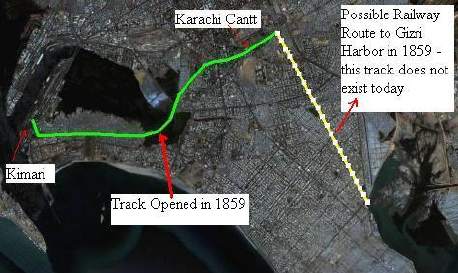
When Karachites saw the First Railway Locomotive:
Among whole of Pakistan, people of Karachi were the first to see a steam locomotive in action and many could not believe what were they seeing.

The locomotive shown above is a 0-6-0 Scindhia Class which was among the first few used on railways in present day Pakistan
As an inaugural run of Railways in Karachi, John Brunton the Chief Engineer of Karachi-Kotri Railway Project, drove in a steam locomotive with Sir Bartle Frere, the Commissioner of Sindh to Kiamari in a railway train. Once again I don’t have the exact date of this travel but it was most likely between 1859 and 1861.
John Brunton wrote following anecdote on this occasion and it sounds so strange today:
The natives of Scinde had never seen a locomotive engine, they had heard of them as dragging great loads on the lines by some hidden power they could not understand, therefore they feared them, supposing that they moved by some diabolical agency, they called them shaitan. When I got out my locomotive for trial the Karachi natives were astounded. I drove the engine myself of course at a slow speed – the natives thronging all round, I was fearful of some accident. At last I thought I should frighten them away, so I blew the engine steam whistle loudly. Instantly they all rushed back from the “Demon” falling over one another much to our amusement.
This completes our capturing of the history of first railway tracks in the city limits of Karachi (and Pakistan). Now let us review the history of Railways North-eastwards of Karachi to Kotri.
Indus Flotilla Company
We promise a detailed post on Indus Flotilla Company only (which I’ve already formatted and we’ll share at ATP soon). Today we’ll just give a brief introduction about it.
Before the advent of Railways, cargo from Karachi harbor was shipped to rest of India via steamers of ‘Indus Flotilla Company’. The steamers took Cargo upto Multan via river Indus and Chenab. This river journey between Karachi and Multan used to take up to 40 days.
Therefore one of the purposes of building Karachi-Kotri railways was to reduce travel times of Indus Flotilla Company. Once Karachi-Kotri railway was completed, Indus Flotilla Company steamers could take cargo from Kotri instead of Karachi and it saved them approx 250 km of circuitous journey through Indus River delta.
Look at the map below. It is from 1865 when Karachi-Kotri and Multan-Lahore-Amritsar Railway line was already built. The reason I want to share this map here is to show how the cargo was moved from Karachi to Delhi via rail and river.
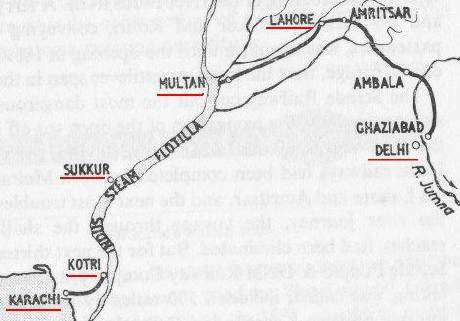
Gauge Selection for Karachi-Kotri Railway Line
The guage (width) of the railway line was selected as 5′ 6″. It however, narrowly escaped conversion to meter gauge due to high cost of the project.
The reason why the decision was finally made in favor of wider gauge for Karachi-Kotri section was the fact that strong sea breeze blows in this area during monsoon. As there is no natural hindrance, the winds blow with such speed that they pose immense resistance to smaller vehicles. One needs to travel on this route during monsoon to actually feel how strong the winds can be. It has been recorded that strong sea breeze blows on this section on 330 days out of 365 days of a year.
Challenges Faced During the Construction:
As the construction on Karachi – Kotri section began, the engineers had to face extreme problems which do not exist today. There were no motor trucks, cars or trolleys in those days. Boats and bullock carts had to be used for the transport of rails.
Whenever the chief engineer wanted to go on inspections, a whole congregation had to go with him including men, tents and camels. The average distance they could cover was no more than 15 km a day. Little confidence was reposed in the local people and the British officers moved about armed. The chief engineer John Brunton always carried a brace of loaded revolvers in his belt and a sword by his side.
The contractor, by the name of Brav, got a lot of trouble. He ran away after 12 months leaving 12000 workmen unpaid.
Climatic Challenges:
The Karachi-Kotri line had to cross numerous water courses which were normally dry, but became raging torrents in the rainy season. Malir river is a good example that floods and cause havocs every few years to this date. To cut the cost, the engineers did not bridge these water courses and instead laid the railway line on stone filling across the bed of streams. They thought that embankments could be flooded without permanent damage. But the water flow was rapid and the stone dressing was washed away and had to be replaced by bridges.
The climatic features here are quite unique. The average rainfall in this area is approximately 180 mm per year but 90mm of it can fall within a day, therefore flash floods are very common here.
Bridges on Karachi-Kotri Section:
Thirty two bridges were built on this section to cope with the high rate of flash floods. 25 of these bridges are masonry arched bridges with spans of between 20 feet and 45 feet.
The longest bridge on Karachi-Kotri section is a viaduct of thirty two 45-ft arches across the Bahrun River. Construction on this bridge was started on 5 March 1859 and completed on 26 January 1861.
Another major bridge on this section is the bridge over Malir River which connects Malir and Landhi localities of Karachi.
Locally quarried limestone is used in the masonry of bridges and station buildings on this section.
Cost of Karachi Kotri Railway Section in 1861
All the problems listed above kept raising the cost of Karachi – Kotri railway line and when the project was complete the cost of this railway line came out to Rupees 250,000 per mile. Imagine this cost 148 years ago!
The Inauguration Date:
The project was finally completed in 3 years and the 173 km long Karachi-Kotri section was opened for rail traffic on May 13, 1861
Salient Features:
Today, the Karachi-Kotri portion of railway line is still one of the fastest speed track in Pakistan with passenger train speeds reaching 120 kmph. This portion of railway line also holds the distinction of having the biggest railway yard in Pakistan with 80 railway tracks running parallel to each other near Pakistan Steel Mills. The gradient on some portion of the Karachi-Kotri track is 1 in 200 feet. The curves are no sharper than 43 chains radius.
The Original Fencing of Track – It still exists after 148 Years!
The Railway track for its entire length was fenced or walled on both sides and the locomotives were not equipped with cow-catchers. The amazing thing is the portions of this wall built 148 years ago can still be seen on both sides of the track between Karachi and Kotri. Of course at many places it is completely gone but at several places it is pretty intact in the form of limestone wall which is now just couple of feet or less high from the ground.
First Locomotives Used on Karachi-Kotri Section:
The first locomotives to be used in and around Karachi and on Karachi-Kotri route were four 2-4-0 tender engines made by Kitson and Co of Leeds in 1858. They had inside cylinders of dimensions 16″ x 24″ and coupled wheels of 5′ 1 1/2″.
Seven locomotives which were 2-2-2 ‘singles’ with cylinder dimensions of 15″ x 22″ and 6 ft driving wheels were supplied by Sharp Stewart & Co in 1859
In the same year (1859) Sharp Stewart & Co also supplied thirteen more locomotives which were 0-6-0 Goods engines with cylinder dimensions of 16″ x 24″ and 5-ft coupled wheels.
These engines burned coal. In addition to Karachi and Kotri, water was taken by these engines at Jungshahi (km 91) and Jhimpir (km 124).
Karachi – Kotri Railway Map – 1861
Following is the map of Karachi-Kotri track as it opened for rail traffic in 1861. This is a very interesting map. Please take a moment to appreciate the details on this map. Note the ‘dotted’ hill road shown between Karachi and Kotri is the same alignment as used by the Karachi-Jamshoro Super Highway and future’s Motorway M9.
The ‘dotted’ roan shown as lower road to Jeeruk (now called Jhirk) is present day alignment of Karachi-Torkham N5 highway. Also note the location of present day Manghopir given as Mugger Pir.
Also note the spellings of names of various places which are now pronounced a bit differently.
Please click on the map below and see a larger and better readable image.
The Building of Karachi Cantt Station
Karachi cantonment station when built was called Frere Road Station and served the elite’ residential areas of Karachi. Frere road that used to connect Cantonment Station to saddar is nowadays called ‘Dr Daud Pota’ road. The present building of Karachi Cantt station
was completed in 1898 and currently it has been declared a ‘Protected Heritage’ by the Government of Sindh.
Following are 3 photos of Karachi Cantt station from 1900 to 1930.
Karachi Cantt Station in 1900
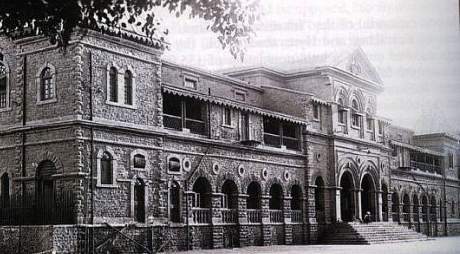
Karachi Cantt Station in 1910
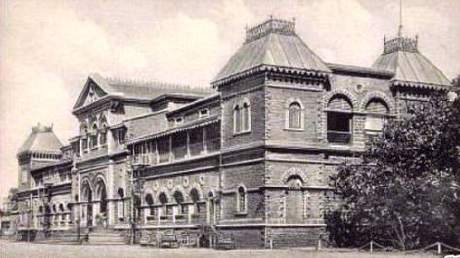
Karachi Cantt Station in 1930
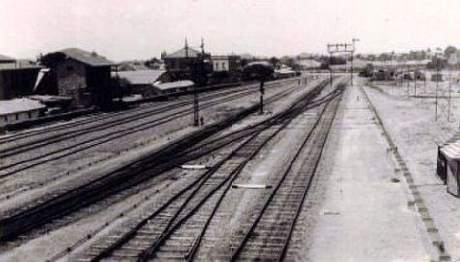
The Railway Station List on Karachi-Kotri Route
Kimari: 0 km point on Pakistan’s Main Line that runs from Karachi to Peshawar.
Karachi City: 5 km
D.C.O.S (Halt): 7 km
Karachi Cantt: 9 km
Chanesar Goth (Halt): xx
Departure Yard: xx
Karsaz (Halt): xx – station now closed
Air Force (Halt): xx – station now closed
Drigh Road Jn: 19 km – Junction for Karachi Circular Railway loop
Drigh Colony Jn: 21 km – Junction for Karachi Circular Railway Loop
Malir Colony Jn: 24 km – Junction for Malir Cantt via Matapan & Model Colony
Airport (Halt): 25 km
Malir: 26 km
Landhi Jn: 29 km – junction for Karachi Circular Railway line to Korangi
Jumma Goth: 35 km
Bin Qasim: 43 km (previously called Pipri)
Badal Nala: xx
Marshalling Yard Pipri: xx
Gaddar: xx
Dabheji: 61 km (Last Station of Karachi City Limits)
Ran Pethani: 79 km
Jung Shahi: 91 km
Braudabad: 108 km
Jhimpir: 124 km
Meting: 143 km
Bholari: 164 km
Kotri Jn: 174 km
Karachi Railway Map 2009
The following map only shows mainline track and does not cover the Karachi Circular Railway Track. Clicking on the map below will take you to a larger and better readable image of this map. I will alos point our readers to note the land reclamation differences between the 2009 Karachi map below and the 1893 Karachi map shown above in the post. Note how Kimari has been converted from an island to an integral part of Karachi mainland now by choking the fresh water inlet of Chinna Creek. The whole present day Clifton beach is actually built on reclaimed earth.
Chronology of Karachi Kotri Railway:
Following satellite image of Karachi with superimposed colored lines show the years when different sections of railway tracks were inaugurated.
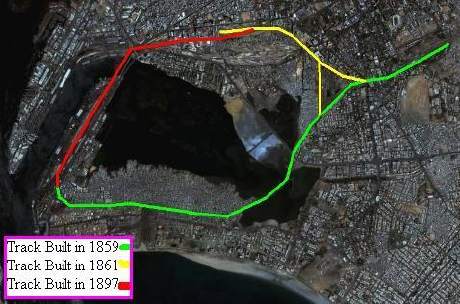
December 1853: Lord Dalhousie, the then Governer General of India, gives his approval for the Karachi – Kotri Railway Line Project.
1855: Scinde Railway Company was formed in London to build Karachi – Kotri Railway Line.
1856: The charter of Scinde Railway Company was increased to build Karachi-Kotri as well as Multan-Lahore-Amritsar line too.
April 29, 1858: Sir Bartle Frere, the then Commissioner of Sindh inaugurates the first ever Railway Project (Karachi-Kotri) line in the territories which later became Pakistan.
1859: Two small stretches of Railway line become functional in Karachi City limits. One is from Kimari to Railway Workshops near present day Karachi Cantt station and other from Railway Workshops to Gizree Harbor.
March 5, 1859: Work starts on the construction of bridge over Bahrun River. This bridge is the longest on this section of Railway.
January 26, 1861: Work on Bahrun River bridge is completed.
May 13, 1861: 104.9 miles (169.93 km) long Karachi City to Kotri track is inaugurateed.
May 15, 1861: 2.3 miles (3.73 km) long double track is inaugurated between Karachi City and Karachi Cantt stations.
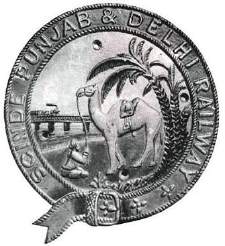 1863: Charter of Scinde Railway was increased up to Delhi by adding the Amritsar-Delhi part of track to the project and the company was renamed as Scinde, Punjab and Delhi Railway (SPDR). Photo to the right shows the crest of SPDR.
1863: Charter of Scinde Railway was increased up to Delhi by adding the Amritsar-Delhi part of track to the project and the company was renamed as Scinde, Punjab and Delhi Railway (SPDR). Photo to the right shows the crest of SPDR.
June 16, 1889: 3.06 miles (4.96 km) long track is opened between Karachi City and Kimari via Native Jetty Railway Bridge on China Creek (near present day PNSC building). This bridge connects Karachi mainland to Kimari island.
June 20, 1897: 20.78 miles (33.67 km) long double track between Karachi Cantt and Pipri (now called Bin Qasim) is opened.
June 30, 1897: 3.06 miles (4.96 km) long double track is opened between Karachi City and Kimari via a parallel railway bridge to famous Native Jetty road bridge on Chinna Creek.
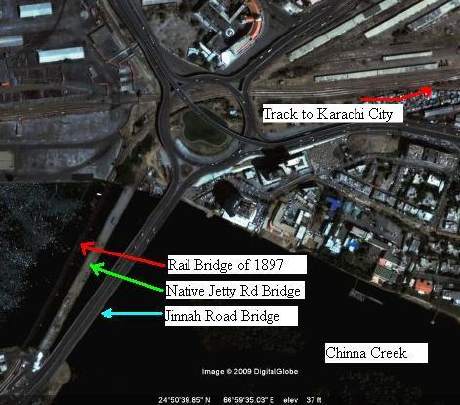
May 3, 1898: 81.82 miles (132.55 km) long double track between Pipri (now Bin Qasim) and Kotri is inaugurated.
1898: Present building of Karachi Cantt station (then called Frere Road Station) is completed.
Accidents on Karachi-Kotri Section:
1) In 1957, 29 tankers of an oil train derailed between Meting and Bholari Stations. The fire caused by burning oil remained lit for three days.
2) August 21, 2005: The upcountry Super Parcels Express jumped the rails while crossing the Malir Bridge near Landhi in the Karachi Division. Eight bogies were substantially damaged when an axle broke due to over loading .
3) The Washout of 2006
Below is the damage that happened to a Railway Bridge on Karachi-Kotri route near Ran Pethani in August 2006. The bridge got washed away in the flash flood of monsoon season. This bridge collapse kept Karachi cut off from rest of the country by railways for more than 2 weeks.

The above list is not exhaustive. I’ll update it with more accidents that happend in the past and with sincere hopes of none in the future.
References and Credits
1. Hundred Years of Pakistan Railway by M.B.K Malik
2. Couplings to the Khyber by P.S.A. Berridge
3. Kurrachee: Past, Present and Future by Alexander F. Baillie
4. Nelles Map of Pakistan, 2007.
5. Google Earth for Satellite images of Karachi
6. pakistanrail.com
ATP’s Posts on Pakistan Railway:
1. Khyber Pass Railway
2. Bolan Pass Railway
3. The Trans-Balochistan Railway
4. Changa Manga Forest Railway
5. Lansdowne Bridge, Sukkur
6. Railway Bridge on Indus at Attock
7. Khojak Tunnel
8. Chappar Rift
9. Karachi Circular Railway – Revival gets 1 step closer
10. Zhob Valley Railway (ZVR)
11. How the First Locomotive Reached Lahore
12. 3000hp Iron Horses of Pakistan
13. Karachi Tramway of Yesteryears
14. Lahore Rapid Mass Transit Rail Project
15. A Phoenix Rises From the Ashes of Bakhshapur
16. ek masla hai… A Railway Runs Through It
17. Ava Gardner in Lahore for Bhowani Junction
18. The Meter-Gauge of Sindh
19. Indus Flotilla Company
20. Karachi to Kotri: First Railways in Pakistan
21. Pakistan Railway on the West Bank of Indus
Pakistan Railway Discussion Group:
If you want to learn more about Pakistan Railways, then feel free to join the Pakistan Railway (PR) discussion group. Everything and anything related to PR is discussed here e.g. preserving of Pakistan’s rail heritage, steam locomotives, sharing of photos and news, time tables etc. You can join the discussion group here.
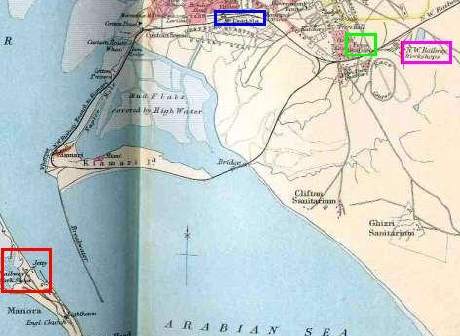
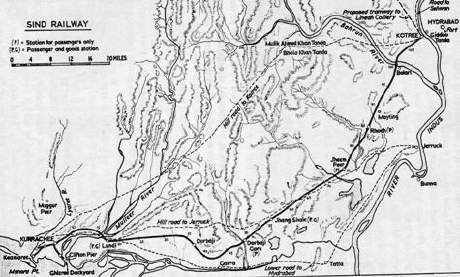
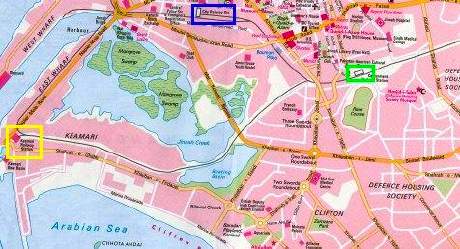



















































The advice given above is highly relevant. The post
reveals some burning issues and questions that should be discussed and clarified, found something much like this page
a few days ago – https://bestgunsafeusa.com/gun-safe-brands/. Furthermore, it’s
vital to comprehend within the very detail. In the post, one can easily find
something fundamental, remarkably for him/her, something that can be
extremely useful. So I’m delighted with the data I’ve just obtained.
Thanks a lot!